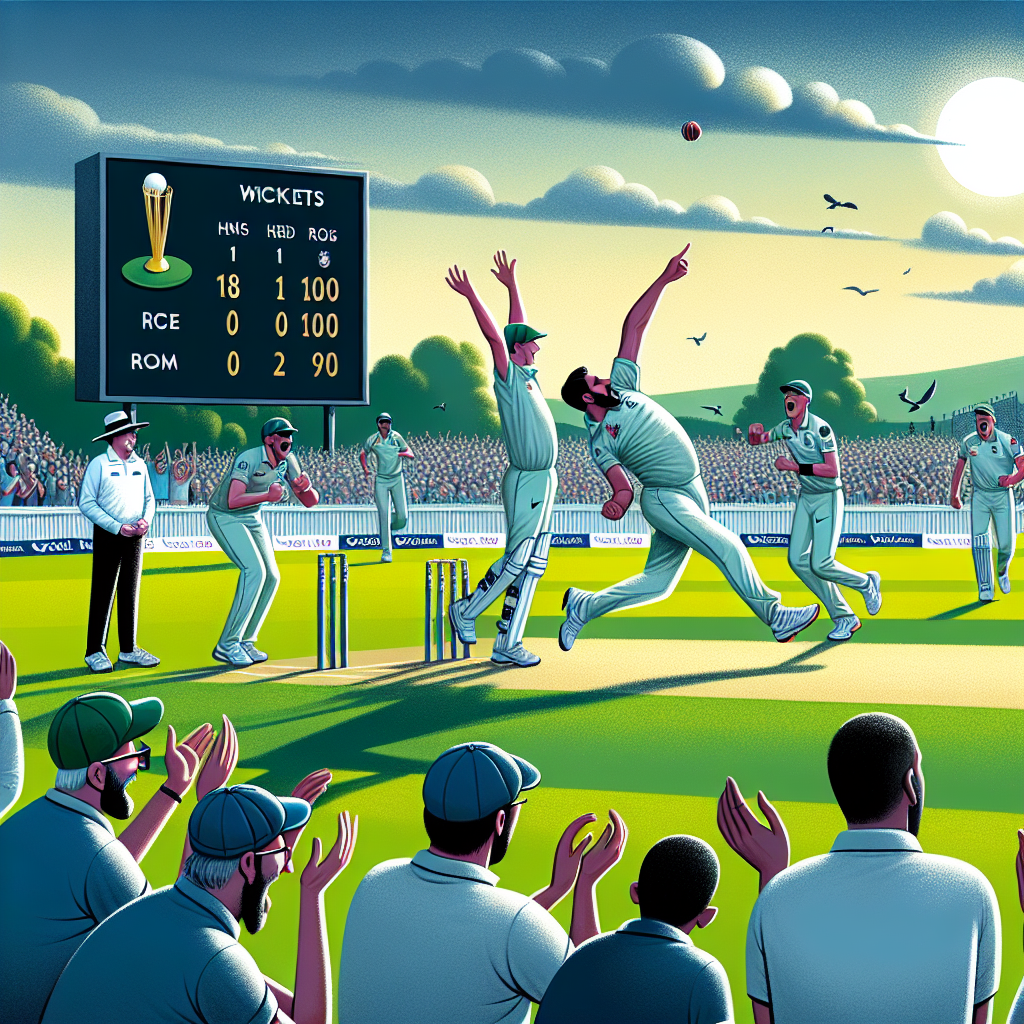Highest Wicket Takers in ODI Cricket: A Comprehensive Analysis

One Day International (ODI) cricket has been a thrilling format of the game since its inception in 1971. Over the decades, it has witnessed numerous legendary bowlers who have left an indelible mark with their wicket-taking prowess. This article delves into the highest wicket-takers in ODI cricket, exploring their careers, achievements, and the impact they have had on the game.
The Evolution of ODI Cricket
ODI cricket has evolved significantly since its early days. Initially, it was a 60-over format, which later transitioned to the current 50-over format. This change brought about a shift in strategies, with bowlers having to adapt to new challenges. The role of bowlers in ODIs is crucial, as they are tasked with containing runs and taking wickets to restrict the opposition.
Top Wicket Takers in ODI History
Several bowlers have etched their names in the annals of cricket history by becoming the highest wicket-takers in ODIs. Here, we explore some of these legendary figures.
Muttiah Muralitharan
Muttiah Muralitharan, the Sri Lankan spin wizard, holds the record for the most wickets in ODI cricket. With 534 wickets in 350 matches, Muralitharan’s career spanned from 1993 to 2011. His unique bowling action and ability to turn the ball on any surface made him a formidable opponent.
- Debut: August 12, 1993, against India
- Best Bowling Figures: 7/30 against India
- Economy Rate: 3.93
Muralitharan’s consistency and skill in both home and away conditions made him a vital asset for Sri Lanka. His ability to bowl in the powerplay and middle overs was instrumental in Sri Lanka’s success during his tenure.
Wasim Akram
Wasim Akram, the “Sultan of Swing,” is another iconic figure in ODI cricket. The Pakistani left-arm fast bowler took 502 wickets in 356 matches from 1984 to 2003. Akram’s mastery of swing and seam, combined with his pace, made him one of the most feared bowlers of his era.
- Debut: November 23, 1984, against New Zealand
- Best Bowling Figures: 5/15 against Zimbabwe
- Economy Rate: 3.89
Akram’s ability to deliver under pressure, especially in crucial matches, was a hallmark of his career. His performances in the 1992 World Cup, where Pakistan emerged victorious, are still celebrated by cricket enthusiasts.
Waqar Younis
Waqar Younis, another legendary Pakistani fast bowler, is renowned for his toe-crushing yorkers and reverse swing. With 416 wickets in 262 matches, Waqar’s career spanned from 1989 to 2003.
- Debut: October 14, 1989, against West Indies
- Best Bowling Figures: 7/36 against England
- Economy Rate: 4.68
Waqar’s partnership with Wasim Akram was one of the most lethal bowling duos in cricket history. His aggressive style and ability to swing the ball late made him a nightmare for batsmen worldwide.
Chaminda Vaas
Chaminda Vaas, the Sri Lankan left-arm seamer, was known for his accuracy and ability to swing the ball both ways. Vaas took 400 wickets in 322 matches from 1994 to 2008.
- Debut: February 15, 1994, against India
- Best Bowling Figures: 8/19 against Zimbabwe
- Economy Rate: 4.18
Vaas’s remarkable spell of 8/19 remains one of the best bowling performances in ODI history. His ability to bowl in different phases of the game made him a valuable player for Sri Lanka.
Factors Contributing to Wicket-Taking Success
Several factors contribute to a bowler’s success in taking wickets in ODIs. Understanding these elements provides insights into the achievements of the top wicket-takers.
Adaptability
Successful bowlers in ODIs are those who can adapt to different conditions and pitches. Whether it’s the swinging conditions in England or the spin-friendly tracks in the subcontinent, adaptability is key.
Variation
Variation in pace, length, and spin is crucial for deceiving batsmen. Bowlers like Muralitharan and Akram were masters of variation, using it to outsmart even the best batsmen.
Fitness and Longevity
Maintaining peak physical fitness is essential for a long and successful career. Bowlers like Muralitharan and Akram played for over a decade, showcasing their commitment to fitness and skill development.
Impact of Top Wicket Takers on ODI Cricket
The impact of these top wicket-takers extends beyond their individual records. They have influenced the strategies and dynamics of ODI cricket in several ways.
Strategic Evolution
The presence of formidable bowlers has led teams to develop new strategies, such as powerplays and fielding restrictions, to counter their impact. This has added a new dimension to the game, making it more competitive and exciting.
Inspiration for Future Generations
The achievements of these bowlers have inspired countless young cricketers to take up bowling. Their success stories serve as motivation for aspiring bowlers to hone their skills and aim for excellence.
Case Studies: Memorable Performances
Several performances by these top wicket-takers have become iconic moments in ODI cricket history. Here are a few memorable instances:
Muralitharan’s 7/30 Against India
In 2000, Muralitharan delivered a match-winning performance against India, taking 7 wickets for just 30 runs. His ability to extract turn and bounce on a flat pitch was a testament to his skill and mastery.
Akram’s 5/15 Against Zimbabwe
Wasim Akram’s spell of 5/15 against Zimbabwe in 1993 showcased his ability to swing the ball both ways. His lethal inswingers and outswingers left the Zimbabwean batsmen